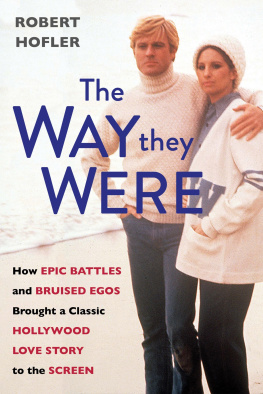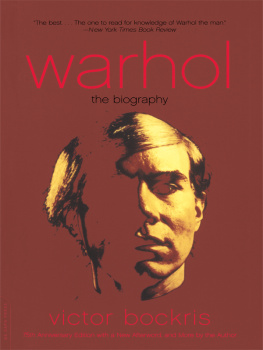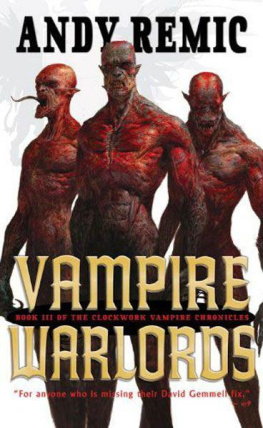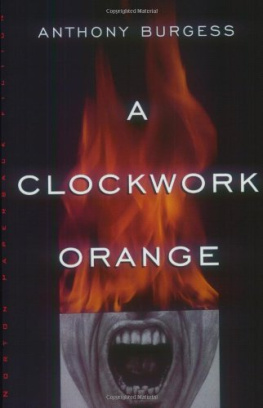S explosion began as one of those decades books.
Id worked as entertainment editor of Penthouse magazine for most of the 1970s, when publications like Penthouse and Playboy were each selling well over five million copies a month. It seemed like the sex life of America had exploded back then, and there were plenty of bestselling novels, manuals, movies, magazines, Broadway shows, and other cultural artifacts to support that hyperbole. If the 1980s were truly greedy and the 1920s actually roared, it seemed to me, in retrospect, that the 1970s were genuinely oversexedand that this might warrant closer inspection in terms of its impact on our culture as a whole.
After visiting a few libraries to scour the microfilm files, and interviewing several writers, directors, actors, and producers, I was surprised to discover that research served me much better than memory. As a result, I decided instead to write about a slightly earlier period of history, one that did not conform nicely to any one decade but rather awkwardly straddled a couple of them. The years 1968 to 1973 coincided with what were my college years, as well as a whole generation of sex, drugs, and rock n rollers who were the ideal audience for such seminal works as Hair , Midnight Cowboy , Myra Breckinridge , Performance , Portnoys Complaint , and many others.
Artists have been breaking sex taboos from the beginning of time, but probably no greater number of those totems to repression were smashed than in the year 1968. It was a veritable sexual explosion that continued and only slightly abated for the next four years, before repetition and exploitation diluted the creative pool. My college-age fantasy conjured up a world in which the writers and makers of everything from The Boys in the Band to Bob & Carol & Ted & Alice were somehow connected and actually formed a community. Writing this book, I was delighted to learn how true my youthful conjectures were and, better yet, how current and genuinely adult most of those artists creative output during that time remains nearly half a century later.
Sexplosion is the story of how a number of very talented, risk-taking rebels challenged the worlds prevailing attitudes toward sex, and, in the process, changed pop culture forever.
I t was the artists. But it was also the audiences.
In 1966, director John Huston picked the plum role of Noah for himself and turned his movie The Bible into the highest-grossing film of the year. Also in 1966, most critics groups drank from the same pool of holy water and anointed A Man for All Seasons , the story of Sir Thomas More, a Roman Catholic saint, as that years best film.
The Bible and A Man for All Seasons may have been highly respected efforts but they hardly generated the most heated talk or press. That distinction of high-profile controversy went to two very different films in 1966: Whos Afraid of Virginia Woolf? , in which erstwhile paramours Elizabeth Taylor and Richard Burton talked dirty to each other, and Michelangelo Antonionis first English-language picture, Blow-Up . Moviegoers who didnt know Lavventura from Leclisse would sit through nearly two hours of Blow-Up , a murder mystery in which the murder is never solved, to get a two-second glimpse of a young womans pubic hair, delivered in long shot, as she and a girlfriend frolic nude with star David Hemmings in a photographers studio.
The audiences were, indeed, different then. They were curious because they had seen and heard so little with regard to graphic sex onscreen, and even more important, they were patient. And they were patient because they were hungry for what they hadnt seen or heard.
Somewhat less patient was an especially acerbic twenty-nine-year-old Texan migr named Rex Reed, who had only recently been enlisted as a freelance writer at the New York Times . Despite his intense antipathy for Antonionis entire oeuvre, Reed had been assigned the task of interviewing the esteemed Italian film director for the Sunday newspapers much-revered and feared Arts & Leisure section. Antonionis Blow-Up had recently turned into something of a cause clbre when the Catholic Churchs Legion of Decency condemned it and the Motion Picture Production Code refused to bless it with a seal of approval. Rather than snipping those two seconds of pubic hair, MGM instead released Blow-Up through a corporate front, given the classy name of Premier Productions; then the studio aggressively pushed the film into Oscar competition, releasing it in the final two weeks of 1966. Reed, whose movie aesthetic had never really evolved beyond the pleasures of All About Eve , much preferred the years front-runner for the Oscar, A Man for All Seasons , which, in its faithful mix of sainthood and knighthood, couldnt get any classier. Or duller.
In his Times profile of Antonioni, Reed emphasized his own total lack of appetite for the assignment at hand by openly complaining in print that watching an Antonioni film was surpassed in tedium only by trying to conduct an Antonioni interview.
The feeling was mutual. Antonioni actively resisted Reeds questions about your favorite this and thatuntil he finally just spat it out.
No American films, he told Reed. I go today to see Andy Warhols film The Chelsea Girls . I am told we make movies alike. I also think Scorpio Rising is lovely, he added.
Lovely is a word few people in the 1960s (or any other decade) ever applied to Kenneth Angers short experimental film about contemporary Nazi homosexual bikers who wield S&M leather gear the way most kids play with their toys.
Upon hearing Antonionis critique, Reed did not do what any mildly curious journalist would do; he didnt ask follow-up questions (anyway, none that made it into print) about The Chelsea Girls or Scorpio Rising , an underground film that had played (and been busted) at grungier basement venues around the world.
The Chelsea Girls was also an underground film, and it also would run into trouble with the law here and there. But unlike Scorpio Rising , The Chelsea Girls managed to graduate rather quickly from its lowly birthplace, the Film-Makers Cinematheque basement theater on West Forty-First Street, to the plush Cinema 57 Rendezvous on the prime Manhattan moviegoing turf of West Fifty-Seventh Street. The Chelsea Girls was, in fact, the first underground film to make the leap to the mainstream, and its upgrade thoroughly outraged another writer at the New York Times , in this case, its chief film critic.
It was all right so long as these adventures in the realm of independent cinema stayed in Greenwich Village or on the south side of 42nd Street, wrote Bosley Crowther. But now that their underground has surfaced on West 57th Street, and taken over a theater with real carpets... it is time for permissive adults to stop winking at their too-precocious pranks.
And the carpet at the Rendezvous was the least of it. Unaware of how lucrative really bad publicity can be, the Chelsea Hotels manager was threatening to sue Warhol!
The Chelsea Girls . It wasnt really so much a movie as it was a dozen short movies, projected side by side on a double screen; these short movies had little to do with each other but what Warhol and his codirector, Paul Morrissey, had dreamed up after the fact. Their idea of filmmaking was to load the cameras magazine (limited to thirty minutes of film), point the lens at some of the more colorful denizens of Warhols entourage, and let them talk and carry on with all due extravagance. It took patience to follow The Chelsea Girls story line for the simple fact that there was no story line.












